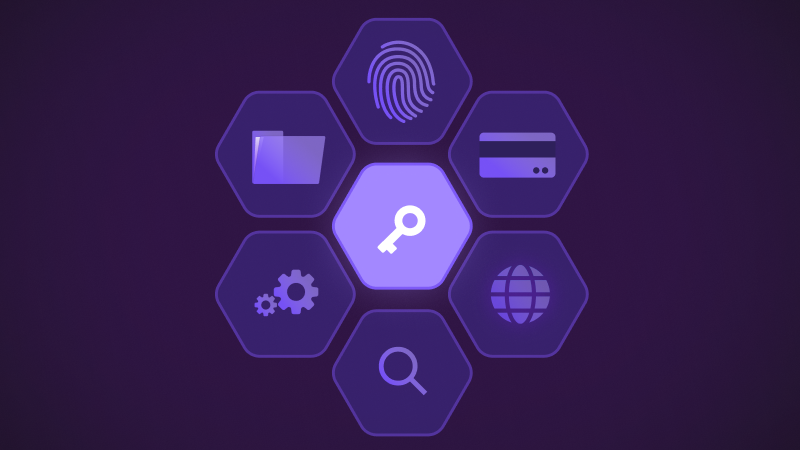The world has been undergoing a rapid digital transformation for some time, and securing data has become a strategic priority for cybersecurity companies. With organizations operating in cloud, hybrid, and multi-cloud environments, sensitive data must be protected through encryption. But even the strongest encryption won't protect your data if the encryption keys themselves, are a mess.
Welcome to the world of key management systems (KMSs), which are designed to help generate, store, rotate, and retire encryption keys in a way that’s secure, compliant, and efficient. But how do you choose the best key management system for your business?
Here, we’ll explore five essential qualities to consider before making a KMS selection. Specifically, we’ll look at:
- Why centralized control matters in modern KMS solutions.
- The importance of scalability and environmental flexibility.
- How to ensure your KMS supports compliance and auditing.
- The value of automation and integration capabilities.
- The certifications that key management systems should have.
1. Centralized Control and Policy Enforcement
For modern tech companies, managing dozens or even hundreds of encryption keys manually or across disconnected systems just isn’t sustainable. A modern key management system should offer centralized control so you can easily enforce security policies and monitor key activity across your entire infrastructure.
Centralization is critical in key management systems. The best key management systems make life easier by giving you one central place to manage all your encryption keys, whether they're in the cloud, on-prem, or spread across a hybrid setup. With everything in one view, it’s much easier to apply consistent security policies, reduce mistakes, and keep a reliable audit trail that checks the boxes for compliance.
KMS platforms that support granular permissions, role-based access control (RBAC), and policy templates are best because they automate key usage and rotation rules. Without this level of visibility and control, it’s nearly impossible to respond to incidents quickly or prove compliance during an audit.
We’ve seen it play out multiple times: a lack of centralized key management contributes to a major data breach, costing the company millions in fines and lost revenue, not to mention a badly damaged reputation.
2. Scalability and Multi-Environment Support
As your infrastructure grows, your key management solution needs to scale along with it. Most organizations today run a mix of public cloud, private cloud, and on-prem systems, which means that your KMS should support all of these environments and work seamlessly across regions and platforms. Whether you’re using AWS, Azure, Google Cloud, or a private data center, your KMS should integrate easily and offer consistent controls.
The most effective key management systems should also be able to scale horizontally, meaning they can take on more workloads, systems or users. You want the ability to support thousands of key operations per second without latency issues.
You’ll also want built-in redundancy and automatic failover features to help maintain uptime and ensure availability. All of this is vital for mission-critical applications where even milliseconds of delay can impact user experience or financial transactions.
Put bluntly, not embracing proper key management can be costly, considering those who use encryption can reduce the financial impact of data breaches by more than $220,000 [source].
3. Performance and Throughput for Modern Workloads
If encryption slows your apps down, you’re not doing it right. The crucial element is striking a balance between performance and security that works for your specific use case.
An important thing to keep in mind is that you want your KMS to align with regulatory standards. Regulations such as GDPR, HIPAA, PCI DSS and others can seem inconvenient, but your KMS should offer built-in tools to help you align with compliance requirements. That includes:
- Detailed audit logs for key activity
- Real-time access monitoring
- Integration with SIEM tools like Splunk or Sumo Logic
- Data residency and geo-fencing controls
Some of the best key management systems even offer preconfigured compliance templates, making it easier to implement policies aligned with regulatory standards from day one. NIST’s SP 800-57 Part 1 has a comprehensive set of key management guidelines [source].
4. Real-time Visibility and Forensic Readiness
A perfect key management system should track every action tied to your keys, including when they’re created, rotated, used, or deleted. And those logs should be locked down so they can’t be changed, which is key if you ever need to investigate an issue.
Some advanced systems even go a step further, sending real-time alerts if something seems off, like repeated access attempts or odd usage patterns. These features are effective at detecting insider threats and identifying breaches early.
5. Lifecycle Automation and Integration Capabilities
Why is key management important to data security? Because, when done right, it’s part of the foundation of an end-to-end lifecycle that includes generating, distributing, using, and eventually deactivating or deleting keys.
With this case, handling keys manually can lead to human error. Issues like keys that expire unknowingly, inconsistent access, or unnecessary downtime can pop up even with the best intentions. Policy-driven automation helps you set up key rotation schedules, expiration timelines, and access windows, ultimately minimizing these potential hiccups.
Features like automated key rotation, self-expiring keys, key versioning and rollback, and zero-touch revocation are all designed to help reduce costly human errors.
Separately, the ideal KMS integrates seamlessly with your existing ecosystem, including:
- Cloud-native tools like AWS KMS, Azure Key Vault, and GCP KMS
- CI/CD tools like Jenkins, Terraform, and Ansible
- Identity and access tools like Okta and Active Directory
- Secret managers like HashiCorp Vault
APIs are vital here because the more integration options a vendor offers, the more flexibility you’ll have and the faster your team can adapt to the platform.
As for security certifications and standards to look for, at a minimum, your KMS should meet the following:
- FIPS 140-2 Level 3 or FIPS 140-3 certification for cryptographic modules
- SOC 2 Type II for operational and data handling practices
- Common Criteria (EAL4+) if you operate in government or global markets
These standards give you confidence that the platform has undergone rigorous, independent testing, and they can also be lifesavers during audits or customer security reviews. If you're in a highly regulated industry (finance, healthcare, government), these certifications can even be mandatory. Don’t settle for a vendor that doesn’t take this seriously.
How Do You Choose the Right Key Management Systems (KMS)?
Not surprisingly, most vendors claim to offer the best key management system on the market. But those that actually protect your data have these features:
- Centralized policy enforcement across your environments
- Scalable architecture for multi-cloud support
- Built-in tools for compliance and auditing
- Automation across the entire key lifecycle
- Industry certifications and third-party validations
Fully understanding these features will save you from major headaches, especially as threats become more sophisticated and regulations become more stringent.
Learn more from this case study about how key management helped in warehouse automations looks secure.
Are you ready to secure your keys the right way? Fortanix’s advanced, scalable key management service is made for today’s diverse and complex IT landscape, whether you're modernizing your encryption, working toward compliance, or automating DevSecOps pipelines.
If you have questions or want to talk to a security expert, contact us, and we’ll walk you through your options.











